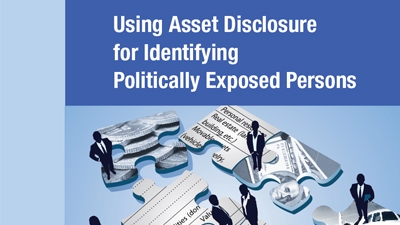Aiming to promote greater transparency and accountability, numerous countries have introduced the requirement for public officials to file asset disclosures.
In parallel, efforts to curb money laundering and the plunder of state assets have resulted in greater scrutiny of financial relationships with politically exposed persons (PEPs).
The fight against corruption has led to the introduction of a series of innovative approaches; however, their implementation is never free of challenges and complementarities and potential synergies are still to be explored.
This paper analyzes how the information on asset disclosure could be used to support the identification of PEPs and provides a series of recommendations that can help support this use.

